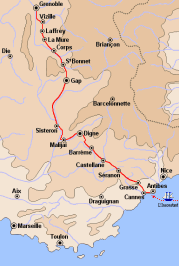
The Flight of the Eagle
from Golfe-Juan to Grenoble
Enlarge
from Golfe-Juan to Grenoble
Enlarge
The final months of the French Empire, known as the Hundred Days, began with the shocking "invasion of the country by a single man" as it was described by François-René de Chateaubriand with the brevity and wit for which he is famous. The phrase "The Flight of the Eagle", a favourite of historians and poets, was taken directly from the Emperor's speech when he landed at Golfe-Juan.
We will trace the Emperor's route to Grenoble noting the iconic landmarks along the way: the photos below show some of the places through which the Eagle standard passed. The place names used are those of 1815 (Basses-Alpes, Porto-Ferrajo, Digne etc.) as are the departments (though the Alpes-Maritimes, for example, had been created only a year earlier).
Island of Elba
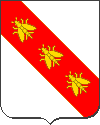
- PORTO-FERRAJO (now called Portoferraio) On February 26, 1815 at nine o'clock in the evening, Napoleon set off on the brig Inconstant, accompanied by a flotilla of four three-masters (the coaster Caroline, the polacca Saint-Esprit and the xebecs Étoile and Saint-Joseph) and two feluccas (Abeille and Mouche) carrying 700 men armed with four cannons. The sea was calm, the wind low. Very slowly the island of Elba disappeared over the horizon.
Department of Var
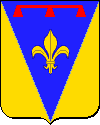
- GOLFE-JOUAN (Golfe-Juan) - It was on this deserted stretch of beach between Antibes to the east and Cannes to the west that Napoleon landed on March 1. He proclaimed that the Eagle would
fly from bell tower to bell tower until it reached the spires of Notre Dame
. But there were no towers here in 1815, only the odd fisherman's hut... After an initial bivouac of several hours in an olive grove near the shore, the company began to march toward Cannes. The journey continued as far as Grenoble with a vanguard under the command of General Pierre Cambronne that preceded the main battalion by several hours. Their task was to scout out the route and to ensure that sufficient rations were provided (Cambronne systematically doubled or tripled the rations he ordered to suggest that the contingent behind them was much bigger than the thousand or so men in reality). Behind the main battalion, followed a rear-guard commanded by General Antoine Drouot. Communication between the groups was maintained by couriers on horseback. - CANNES - The city (a metropolis of 3,500) was reached at nightfall. They bivouacked around the Chapel of Our Lady of Safe Harbour (which no longer exists today, the Church of Our Lady of Safe Journeys was built on the site between 1868 and 1879). They left at dawn, abandoning the coastline for the road to Grasse. From bell tower to bell tower: Our Lady of Hope dominates Cannes from the Le Suquet quarter
- MOUGINS - The company passed through the village of 1,600 in the morning of March 2. From bell tower to bell tower: The Church of Saint James the Elder
- MOUANS (Mouans-Sartoux) - This village of scarcely 500 or 600 inhabitants is situated adjacent to Mougins, and was passed without a halt. From bell tower to bell tower: The Church of Saint André
- GRASSE - This was the first city Napoleon encountered. With a population of more than 12,000, the city was flourishing thanks to its tanneries and perfume trade, a new but prosperous industry. Napoleon arrived around midday and held a meeting of his council. He had expected the construction of the road to Digne to be complete, but it was not. There was still the possibility of taking the road to Draguignan through the Rhone valley, but due to the unfavourable welcome he had received in Provence the year before during his tour from Fontainebleau to Saint-Raphaël he chose instead the paths and trails through the mountains. As a result, the vehicles that had been purchased in Cannes were left behind. There was time for lunch on the Roquevignon plateau, which overlooks Grasse, before the march through the mountains began around two o'clock. From bell tower to bell tower: The Cathedral of Our Lady of Puy
- SAINT-VALLIER (Saint-Vallier-de-Thiey) - The troupes arrived around four o'clock in the afternoon from the Pilon pass. They took a few minutes to catch their breath and quench their thirst before starting off again, this time with the addition of several new mules. From bell tower to bell tower: The Church of Our Lady of the Assumption
- ESCRAGNOLLES - Napoleon received a warm welcome in the native village of General François Mireur, who had been killed during the Egyptian Campaign. The Emperor visited the mother of his former brother in arms. From bell tower to bell tower: The Church of Saint Martin
- SÉRANON - After travelling through the Valferrière pass (at an altitude of 1169 m) in the snow, the company arrived at Séranon around ten o'clock in the evening. The bivouac was constructed for a few brief hours at the Château de Broundet (then owned by an aristocratic family that has since been ruined). Napoleon slept fully clothed in an armchair, wishing to leave before dawn to Castellane and Grenoble, in order to get ahead of the royalist troops probably sent to intercept him. From bell tower to bell tower: The Church of Saint Michael
Department of the Basses-Alpes

- CASTELLANE - On the morning of March 3 after crossing the Luens pass (1054 m), the company arrived in Castellane (population 1,900). It had been the subprefecture of the Basses-Alpes since 1800. The entrance to the city was via the Roc bridge that has straddled the Verdon since the fifteenth century. The company took advantage of the market to buy several new horses and mules. Napoleon ate lunch at the subprefecture building before starting again around two o'clock. Under the falling snow, they followed the mule track that led to the Lecques pass. From bell tower to bell tower: The Church of the Sacred Heart (it did not see Napoleon pass by since it was not constructed until the end of the Second Empire)
- SENEZ - Napoleon followed the Asse river along the right bank, passing in front of Senez, a village of only 750 inhabitants, on the left bank. Interestingly, Senez was the seat of a diocese from the fifth century until 1790! From bell tower to bell tower: The ancient Cathedral of Our Lady of the Assumption
- BARRÊME - Five kilometers further, the Emperor received a warm welcome in Barrême by its population of one thousand when he arrived at eight o'clock in the evening. The troupes welcomed the rest offered after a difficult journey in dangerous conditions. From bell tower to bell tower: The Church of Saint John the Baptist, constructed under the Second Empire on a site that saw Napoleon pass by
- LA CLAPPE - The company left Barrême on March 4 at six in the morning and rather than follow the banks of the Asse, they climbed up toward the Corobin pass (1211 m) . A brief halt was called as they passed through the hamlet of La Clappe . They then climbed down toward the thermal baths at Digne. From bell tower to bell tower: Chapel of La Clappe
- DIGNE (known today as Digne-les Bains) - Napoleon arrived at the chief town of the Department of the Basses-Alpes (population 3,500) around midday. That Saturday was also a market day. He lunched with some of the town's dignitaries, though the Prefect and the Bishop were prudently retained by business elsewhere in the city. The company moved on without delay early in the afternoon. From bell tower to bell tower: Cathedral of Saint Jerome
- MALIJAI - They followed the right bank of the Bléone until they reached Malijai , a small village of 470. Several hours earlier, the château at the entrance to the village had been requisitioned by General Cambronne. The Emperor stayed there for the night while his troupes set up camp in the grounds. From bell tower to bell tower: The parish church of Saint Christopher (rebuilt in 1839 on the site of the older Church of Our Lady of Hope)
- L'ESCALE - Another early start on Sunday, March 5 saw the company reach L'Escale (population 600) which they passed without stopping. From bell tower to bell tower: The Church of Our Lady of Mandanois
- VOLONNE - A short halt was called in this village of 1,100 before they continued toward Sisteron along the left bank of the Durance. From bell tower to bell tower: The Church of Notre-Dame-des-Salles
- SISTERON - Napoleon arrived just before midday in this city of close to 4,000 inhabitants. He met briefly with the local dignitaries before lunch and then set off again. Always foremost in his mind was the importance of remaining ahead of the royalist troops that were never far off... From bell tower to bell tower: The Clock Tower
Department of the Hautes-Alpes
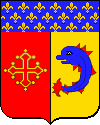
- LE POËT - The road toward Gap runs through several beautiful villages, including this hamlet of a few hundred inhabitants located 13 kilometers from Sisteron. However, admiring the countryside may not have been one of the Emperor's priorities... From bell tower to bell tower: The Church of Saint Peter
- ROUREBEAU - It was the same for this hamlet in the Upaix district... From bell tower to bell tower: Since there was no bell tower in Rourebeau, the Eagle continued its flight...
- MONÊTIER-ALLEMONT - ... through this village, where the inhabitants are called "Monêtiards". From bell tower to bell tower: The Church of Saint Martin
- LA SAULCE - Here a short halt was called so the troupes could rest before starting again for Gap, which was no more than 18 kilometers away over easy terrain. From bell tower to bell tower: The Church of Saint John the Baptist and Saint Marcellin
- TALLARD - This village of several hundred was the last on the road to Gap where a well-deserved camp was established for the night. It is nestled at the foot of an imposing fourteenth-century château. Soon after, the sun set. From bell tower to bell tower: The Church of Saint Gregory of Amnice
- GAP - Napoleon arrived at the chief town of the Hautes-Alpes (seven thousand inhabitants) around eleven o'clock in the evening. The city had been decorated on the orders of the Prefect Charles-François de Ladoucette, who had been appointed in April 1802 before the Emperor named him Prefect of Roer in Aix-la-Chapelle in April 1809. Napoleon dined and spent the night at the Marchand Hotel. In recognition of the welcome he had received from the residents during the days he was there, he wrote the following message:
To the inhabitants of the Departments of the Hautes- and Basses-Alpes: Citizens, I was sincerely touched by your warm welcome, your wishes will be fulfilled. The Nation's cause will triumph yet. You should indeed call me your Father; I live only for the honour and happiness of France. My return will dispel all your concerns. It guarantees protection of property, equality between classes and the rights you have enjoyed for the past 25 years, for which our fathers so fervently hoped and that are now a part of your lives. In whatever circumstances I should find myself in the future, I will always fondly remember everything that I saw while crossing your part of the country.
Drouot was assigned the task of having it printed. From bell tower to bell tower: The Cathedral of Our Lady of the Assumption - LAYE - Cambronne and his vanguard left Gap on the morning of March 6 in the direction of the Bayard pass (1246 m). Napoleon allowed the main company to take some well-earned rest until noon. The company set off toward the pass in the early afternoon, passing through the village of Laye without stopping. From bell tower to bell tower: The Church of Saint Peter
- SAINT-BONNET-EN-CHAMPSAUR - Here, the imperial company called a short halt between La Fare and Saint-Bonnet en Champsaur (the place is more precisely known as "Les Barraques") before starting again for Grenoble. From bell tower to bell tower: The Church of Saint-Bonnet ... in Saint-Bonnet !
- AUBESSAGNE (Chauffayer) - Napoleon and his men did not stop on their way through the hamlet of Chauffayer (which would give its name to the district in 1887). From bell tower to bell tower: The Church of Saint Anne
- SAINT-FIRMIN - Napoleon and his men travelled on foot through this relatively new district at the entrance to the Valgaudemar Valley. It was created from the amalgamation in 1791 of the districts of La Broue, L'Esparcelet, Les Préaux, Reculas and Villard-Saint-Firmin. Soon after, they left the Department of the Hautes-Alpes. From bell tower to bell tower: The Church of Saint-Firmin in the village of the same name
Department of Isère
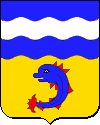
- CORPS - Upon entering the Department of Isère, a halt was called for the night in this small town of 1,100 at the foot of the l'Obiou mountain. Napoleon stayed at the Hotel du Palais on the Grand'Rue. From bell tower to bell tower: The parish Church of Saint Peter
- LA MURE - This town of 1,900 saw the imperial troupes pass through on the morning of March 7. It is located at an altitude of nearly 1000 meters on the Matheysine plateau. A two-hour halt was called before they set off again toward the north in the direction of Laffrey and Vizille. From bell tower to bell tower: The Church of Saint Peter. The church's name was changed in 1925 to Blessed Father Pierre-Julien Eymard, the founder of the Congregation of the Blessed Sacrament.
- PIERRE-CHÂTEL - Though the Emperor thought a regiment of royalists had been stationed here to block the road to Grenoble, they passed through this village of 700 without incident. From bell tower to bell tower: The Church of Saint Peter
- PETICHET (Saint-Théoffrey) - The company also travelled through this hamlet without difficulty. From bell tower to bell tower: The Chapel of Our Lady of Pity and Saint Sebastian
- LAFFREY - On a meadow of several acres at the entrance to the village of Laffrey , Napoleon faced a battalion from the Fifth Regiment of the Line Infantry under the command of Lessart (or Lessard). Napoleon advanced into the line of fire and addressed the soldiers in front of him:
Soldiers of the Fifth Regiment, I am your Emperor, know me!
He continued to advance and, holding open his grey riding coat, shouted,If any one of you would kill your Emperor, here I am
. At these words, every man put down his weapon and joined with Napoleon who tearfully exclaimed,Long live the Emperor!
With the addition of a infantry battalion from the Fifth Line, the company travelled through Laffrey toward Vizille. From bell tower to bell tower: The Templar church in Laffrey - VIZILLE - The Emperor did not stay long in this town of 2,000 on the banks of the Romanche River. It is also the home of the imposing and prestigious Dauphiné château. From bell tower to bell tower: The Church of Saint Mary
- BRIÉ (Brié-et-Angonnes) - Here, in a district of 600 inhabitants spread over several hamlets on a plateau overlooking Grenoble, Napoleon was joined by the Seventh Regiment of the Line Infantry under the command of Colonel Charles Angélique François Huchet de La Bédoyère. The Emperor rewarded the Colonel for being the first senior officer to join the cause by naming him Brigadier General and his aide-de-camp. From bell tower to bell tower: The Church of Saint Peter and Saint Paul
- EYBENS - This village of 700 had the honour of seeing Napoleon take a foot-bath in a copper kettle at the inn... before continuing on the road to Grenoble. From bell tower to bell tower: The Church of Saint Christopher
- GRENOBLE - Napoleon arrived in Grenoble (population 23,000 and the administrative center of Isère) at nightfall. He entered triumphantly around eleven o'clock by the Bonne Gate after General Jean-Gabriel Marchand, the city's Commander, saw the troops under his orders enthusiastically join the Emperor. From bell tower to bell tower: The Cathedral of Notre Dame